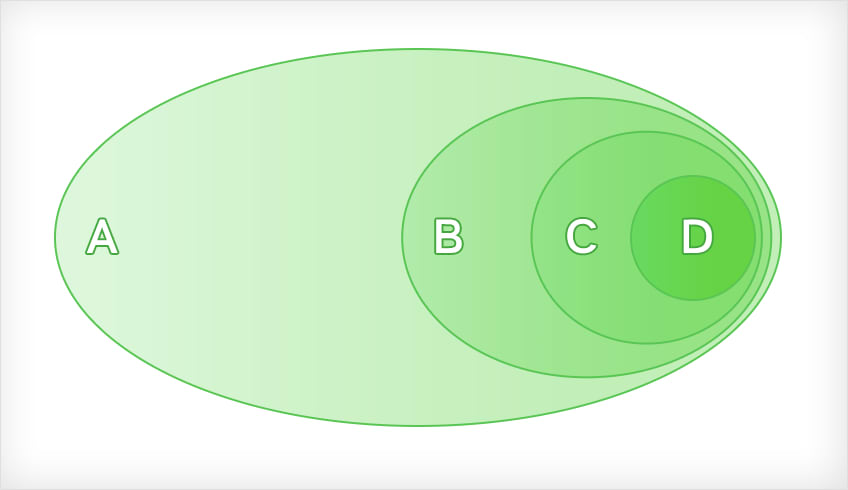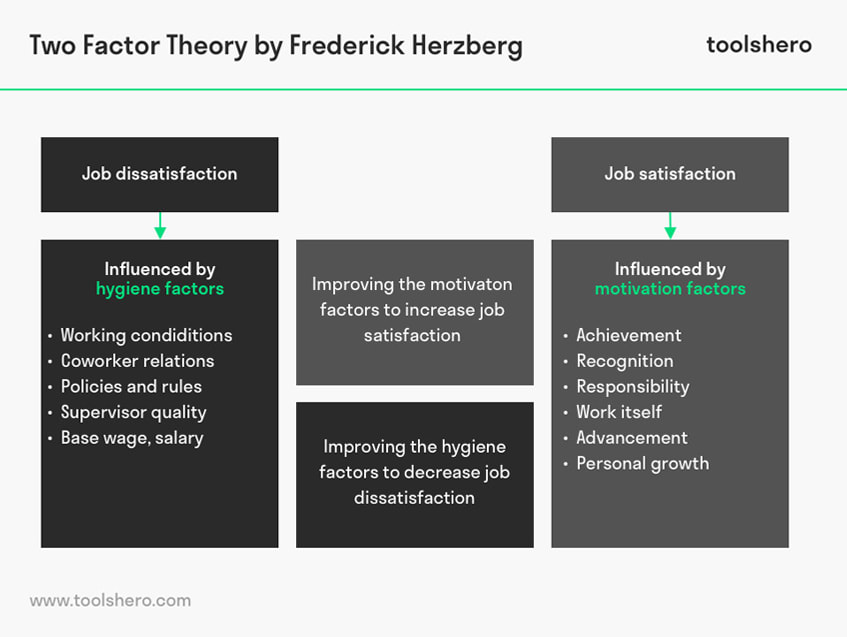Understanding This Scientific Theory Can Teach Companies to Hire (and Retain) The Best Engineers

Devs @ 7pace
Posted on July 31, 2020

Here’s a shocker.
For a decade, software engineering positions have been some of the hardest jobs to fill in the United States.
The fact is that there are more open jobs than there are qualified engineers. Many candidates are either not initially qualified for the jobs they apply for, or they leave companies soon after being hired.
If you want to hire and retain the best engineers for your firm, you have to recognize that the most talented recruits are likely to have a lot of options. Getting them onboard at your company — and then getting them to stay — is a challenge tech companies everywhere are facing.
One way to both entice job candidates to accept your company’s offer (and to get them to stick around) is to make your company a better place to work.
This may not be rocket science, but there’s another branch of science–psychology–that can give us a framework building a strategy to attract and retain the best talent when it’s in demand.
That’s the Two-Factor Theory.
What’s So Hard About Recruiting and Retaining Top Talent?
Everyone who’s been in the tough position of finding and hiring great talent knows there are a ton of challenges involved.

Consider this diagram.
Circle A is the entire talent pool of engineers.
But for the job position that’s available, you need someone who’s familiar with the technology you use. Engineers with that knowledge are in circle B.
You also need someone who has experience in your industry (or at least applicable skills and knowledge). Those engineers are in circle C.
And don’t forget that your new hire needs to either live in your area, willing to relocate, or eligible to work remotely. Engineers who fit these requirements are in circle D.
As you can see, the available talent pool just got a lot smaller.
Attracting talented engineers is, at its core, a supply-and-demand problem.
Finding the right talent with all the necessary qualifications can be like finding a needle in a haystack. And the issue is further compounded by the fact that so many other companies are looking for specialized talent, too. Engineers have choices, so it’s up to their employers to not only attract the best coders to open positions, but to convince them to stay.
What is Frederick Herzberg’s Two Factor Theory?
So what does Frederick Herzberg’s Two Factor Theory have to do with any of this? It’s all about satisfaction and motivation of employees, which can be huge factors in whether they decide to accept a job — and how long they stay in that job.
The Two Factor Theory, also known as the Motivation-Hygiene Theory or the Dual Factor Theory, came from Herzberg, an American psychologist, in 1959.
He posited that people’s job satisfaction depends on factors that fall into two categories: Satisfiers (also called motivators) and Dissatisfiers (also called hygiene factors).
One thing to note is that satisfiers and dissatisfiers aren’t exact opposites in Herzberg’s theory.

According to the model, hygiene factors work sort of like gravity. They establish the base level of satisfaction (or dissatisfaction) that an employee feels. Even in the absence of gravity, things don’t float off into space. But, it’s much easier to launch them into orbit.
From a company standpoint, this means that depending on the state of the hygiene factors in your work environment, you may need to invest heavily in motivation factors in order to overcome the gravity of less-desireable working conditions. On the flip side, if your work environment is a great place, it will take less to motivate employees to perform their best.
More tactically, this theory also tells us some other important things about the recruiting, hiring, and retention of employees:
- Salary is most often considered a Hygiene Factor; this means that paying employees more will not motivate them to do more work (or even necessarily accept your job.)
- Most of the work environment is shaped by relationships — with colleagues, managers, and executives — so it’s important to carefully consider what impression these people are making on new hires or potential hires.
- Almost all motivating factors come down to some form of recognition or reward for work; people won’t be motivated if they feel they have nothing to gain by going the extra mile.
Under Herzberg’s theory, there are four different combinations of factors that can exist in the workplace.

High hygiene and high motivation: This is ideal. In this case, employees have few complaints and are also highly motivated. Dissatisfaction factors are low, and satisfaction factors are high.
High hygiene and low motivation: In this case, employees have few complaints, but they still aren’t very satisfied at work. Dissatisfaction factors are low, meaning employees are happy with their pay, work conditions, and relationships at work. But satisfaction factors are also low, meaning employees aren’t happy with their recognition, opportunities for growth, responsibility, or the work itself. This is a recipe for attracting talented applicants but also suffering from high employee churn.
Low hygiene and high motivation: In this case, employees are motivated to do their best work, but they are dissatisfied with the environment in which that work is taking place.
They’re happy with their recognition, personal growth, and opportunities for advancement. But they might be dissatisfied because of a low salary, an unqualified supervisor, or bad relationships with other people at work. This is the scenario seen at many startups, which are often not able to offer the highest pay, can have stressful work environments, or lack strong management. Yet, many talented developers choose–and remain loyal–to these workplaces because they feel they have an opportunity to do good work and make an impact on the company.Low hygiene and low motivation: This is the worst-case scenario. In this case, employees are not motivated and also have a lot of complaints. They are dissatisfied because dissatisfaction factors are high, and they are not satisfied, because satisfaction factors are low. This is the dead-zone from an engineering standpoint. If your company reaches this level, you’ll have a hard time attracting or retaining any employees.
How the Two Factor Theory Can Help You Find (and Keep) the Best Engineers
We’ve all heard of brilliant tech talent taking a lower-paying job and working insane hours for a hot startup in the Valley.
What drives them to do that? Well, usually, it’s the upsides–the opportunity for reward, recognition, and advancement.
These motivation factors contribute enough upward thrust to overcome the gravity created by a more stressful work environment.
But that stressful environment is what causes burnout, which as anyone in the tech field knows, is common among even the most talented and passionate people. The Two-Factor theory is a great way to combat the factors that contribute to burnout.
The Two-Factor Theory can be applied to both hiring and retention in different ways. Let’s take a look at how you can apply this theory to recruitment first, and then to your workplace in general to make sure the top talent you attract wants to stick around.
Remove Dissatisfaction Factors to Hire the Best
When you’re recruiting a new engineer and they aren’t yet a part of your workplace culture, the factors that will be most apparent to them–and therefore affect their decision on where to accept a job–will be hygiene factors.
To attract the best engineers to your company, focus on improving dissatisfying factors. Some ways to do this include:
- Offering a competitive salary.
- Providing safe and comfortable working conditions where employees can focus on doing great work.
- Facilitating teambuilding activities that help employees and their supervisors get to know one another and work together better.
- Being flexible with workplace policies and rules, when appropriate. For example, allowing work-from-home days or flexible hours if employees need them.
All of these show potential recruits that the workplace is healthy and has low friction.
From an engineer’s standpoint, these things signal that the job could be good. But they may not be the ultimate make-or-break factors that determine if someone ultimately comes on board (or if they stay around).
With that said, if your company has a reputation for having a kick-ass culture, it will also help with attracting and hiring top talent.
Improve Motivating Factors to Retain Good Engineers
Once an engineer joins your team, they learn more about your motivating factors. If they joined the company because all the hygiene factors were satisfactory, they’ll stay if the motivating factors also make for a healthy workplace.
To retain the most talented engineers, focus on improving satisfying factors — ensuring your employees are as satisfied as possible in their work. Some ways to do this include:
- Providing interesting and challenging work that keeps your employees busy, engaged, and using their skills.
- Recognizing employees’ hard work and achievements.
- Giving employees more responsibility within the company.
- Offering clear paths for employees to advance their careers without having to leave your employment to do it.
- Giving employees opportunities for personal growth, like an education stipend or a lunch-hour lecture series.
It’s also worth noting that salary is considered a hygiene factor because data shows most people have a “salary floor” — basically, once an employee has a comfortable salary, pay becomes much less of an issue (it’s just a matter of basic hygiene).
So while companies can “brute force” people into taking jobs by offering salaries that are much higher than the competition, it’s likely more to a company’s advantage to offer a competitive salary and focus on removing dissatisfaction factors while adding satisfaction factors.
This saves the company money and creates a workplace that’s more appealing and more likely to entice new hires to stay onboard. In other words, having a terrible workplace will end up costing you a lot of money.
As long as good engineers stay hard to find, employers will have to work to find and keep the best people. While the Two Factor Theory provides one possible path to doing so, the big picture is that developers will join and stay with companies that give them the best work in the best environments.
7pace Timetracker is the only integrated, professional time management solution for teams using Azure DevOps.

Posted on July 31, 2020
Join Our Newsletter. No Spam, Only the good stuff.
Sign up to receive the latest update from our blog.
Related

July 31, 2020
